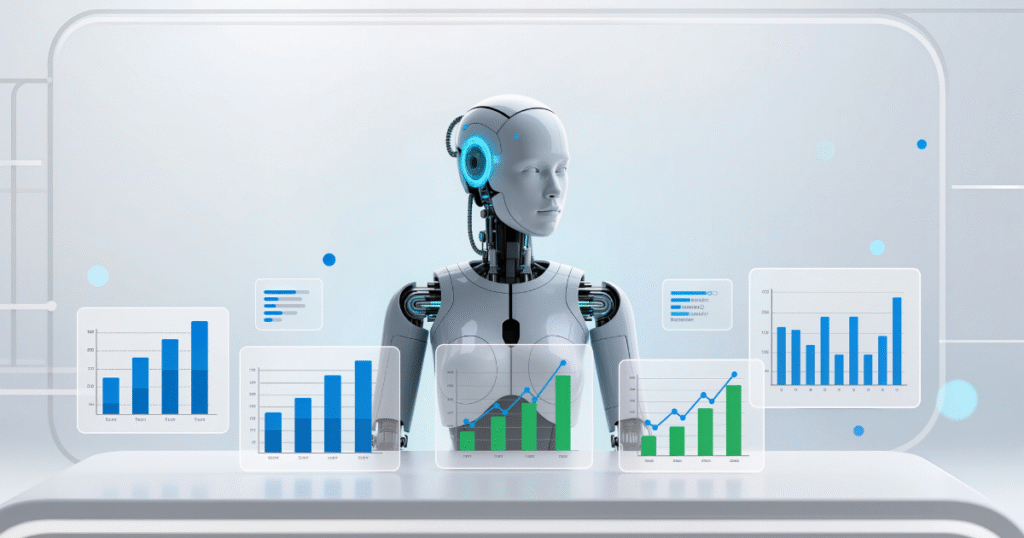Synthetic data is becoming one of the most important building blocks of enterprise AI. As organizations accelerate their use of large language models and machine learning systems, they face a new challenge. They are running out of high quality, safe, and diverse training data. Traditional datasets are expensive to curate, slow to access, and often blocked by compliance rules and privacy regulations. Synthetic data solves this problem by generating artificial datasets that behave like real data while protecting sensitive information.
TL;DR
- Synthetic data replicates real world patterns without exposing sensitive information.
- Enterprises use it to speed up training, overcome privacy bottlenecks, and scale machine learning.
- Industry analysts expect synthetic data to help close the gap as human generated data becomes insufficient.
- The market is projected to grow at more than thirty percent annually through the next decade.
- Synthetic data benefits finance, healthcare, retail, and any domain that needs high volume structured or unstructured datasets.
Why Synthetic Data Matters Now
AI models require enormous volumes of high quality training data. Recent research suggests that current AI development trajectories may exhaust all available human created data between 2026 and 2032. At the same time, regulations such as GDPR, HIPAA, and state privacy laws restrict how companies can use real data for training.
Enter synthetic data.
It is generated using models that learn statistical patterns from real datasets and then create new, artificial records that closely mimic the original distribution. This allows enterprises to:
- bypass data privacy constraints
- accelerate experimentation
- improve data quality
- increase dataset volume without new data collection
- reduce dependence on manual labeling
The result is a faster, safer, and more scalable AI development pipeline.
How Modern Synthetic Data Platforms Work
Synthetic data platforms have evolved beyond simple data masking or randomization. Today’s systems generate high fidelity datasets across multiple data types, including:
- tabular enterprise data
- unstructured text
- audio and time series data
- customer behavior simulations
- multimodal training data
- computer vision datasets
Users specify their requirements using natural language prompts or data schemas. The system learns patterns from a source dataset and produces new data that passes statistical validation tests while remaining fully anonymized.
Enterprises report significant improvements. Synthetic data can offer fifteen times faster data availability and as much as five times lower cost compared to manual dataset creation.
The Growing Market for Synthetic Data
The synthetic data market is expanding rapidly. Analysts predict annual growth of nearly forty percent through 2032, reaching a valuation of more than four billion dollars. This surge is driven by several forces:
Data scarcity
Human created data cannot meet the needs of modern language models and deep learning systems.
Privacy regulation
Industries like finance and healthcare need compliant alternatives to real data.
Model robustness
Synthetic data helps generate edge cases and rare scenarios that improve model accuracy.
Enterprise modernization
Companies want to speed up AI development without operational delays.
As a result, synthetic data is becoming foundational for any organization scaling AI across multiple teams.
Leaders in the Synthetic Data Ecosystem
Several companies are shaping the direction of this market and offering specialized capabilities.
Tonic AI
A platform that supports both data masking and synthetic data generation. It is widely used in healthcare and finance to protect sensitive information while enabling teams to build training datasets. The company has raised more than forty million dollars.
Mostly AI
A European synthetic data provider focused on customizable data generation tools. Users can build and share data generators that replicate complex customer or operational datasets. The company has raised more than thirty million dollars.
Synthesis AI
Focused on computer vision. The platform generates synthetic images, scenes, and 3D environments for surveillance systems, autonomous machines, virtual try on tools, and pedestrian detection. The startup has raised more than twenty million dollars.
These companies represent a broader movement toward high fidelity artificial datasets that provide the scale and flexibility enterprises need.
What Synthetic Data Means for Enterprise AI
Synthetic data redefines what is possible in enterprise machine learning. It enables:
Faster model iteration
Teams no longer wait for data provisioning or clearance.
Continuous experimentation
Synthetic datasets can be regenerated to test new scenarios or model variations.
Reduced privacy risk
Artificial data prevents exposure of personal or regulated information.
Greater representativeness
Edge cases can be artificially created to reduce bias and strengthen model reliability.
Foundation for multimodal AI
As models require text, images, structured data, and behavioral context, synthetic datasets fill the gaps humans cannot.
The impact extends across industries. Banks use synthetic customer data to test fraud models. Hospitals use synthetic EHR data to train clinical support systems. Retailers build synthetic shopper journeys. Telecom companies simulate network performance. In every case, synthetic data accelerates innovation by removing the real world constraints of collection and compliance.
FAQs
Is synthetic data as accurate as real data?
High quality synthetic data maintains statistical fidelity to real datasets, which makes it effective for training or testing models.
Can synthetic data replace real data?
Not entirely, but it supplements real data and fills gaps in availability, scale, and edge case coverage.
Is synthetic data compliant with privacy laws?
Yes. Synthetic data is fully anonymized and is considered privacy safe because it does not contain identifiable or linkable information.
What industries benefit most?
Finance, healthcare, retail, insurance, and any field with sensitive data or strict regulation.
How does synthetic data help LLMs?
LLMs require massive data volumes. Synthetic text and structured data help scale training without exhausting human created sources.
Conclusion
Synthetic data is emerging as one of the most important innovations in modern AI development. As training data becomes scarce and privacy constraints tighten, enterprises are turning to artificial datasets to speed up experimentation, strengthen model performance, and safely scale their AI programs. What began as a niche technology is now becoming foundational infrastructure for the next generation of large scale models, multimodal systems, and enterprise AI applications.
The organizations that invest in synthetic data now will be better positioned to build competitive, secure, and high performing AI systems in the years ahead.
Related content you might also like:
- Synthetic Media Regulation: Pausing MLK Jr. AI Deepfakes
- Deepfakes: Trust and Risks of AI-Synthesized Faces
- On Privacy
- UBS Bets on Synthetic Communication
- Why the Future of Tablets Isn’t in Apps


